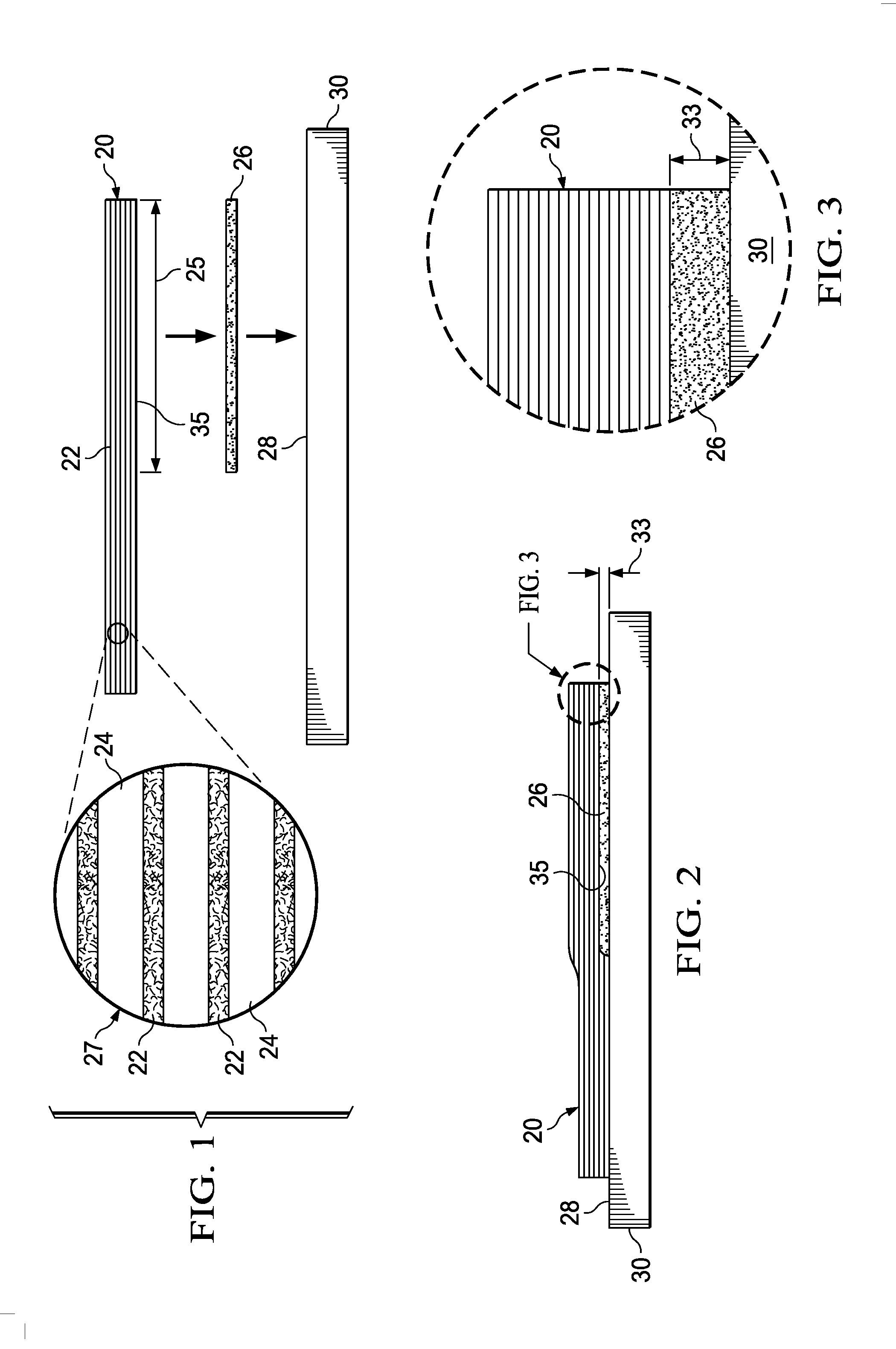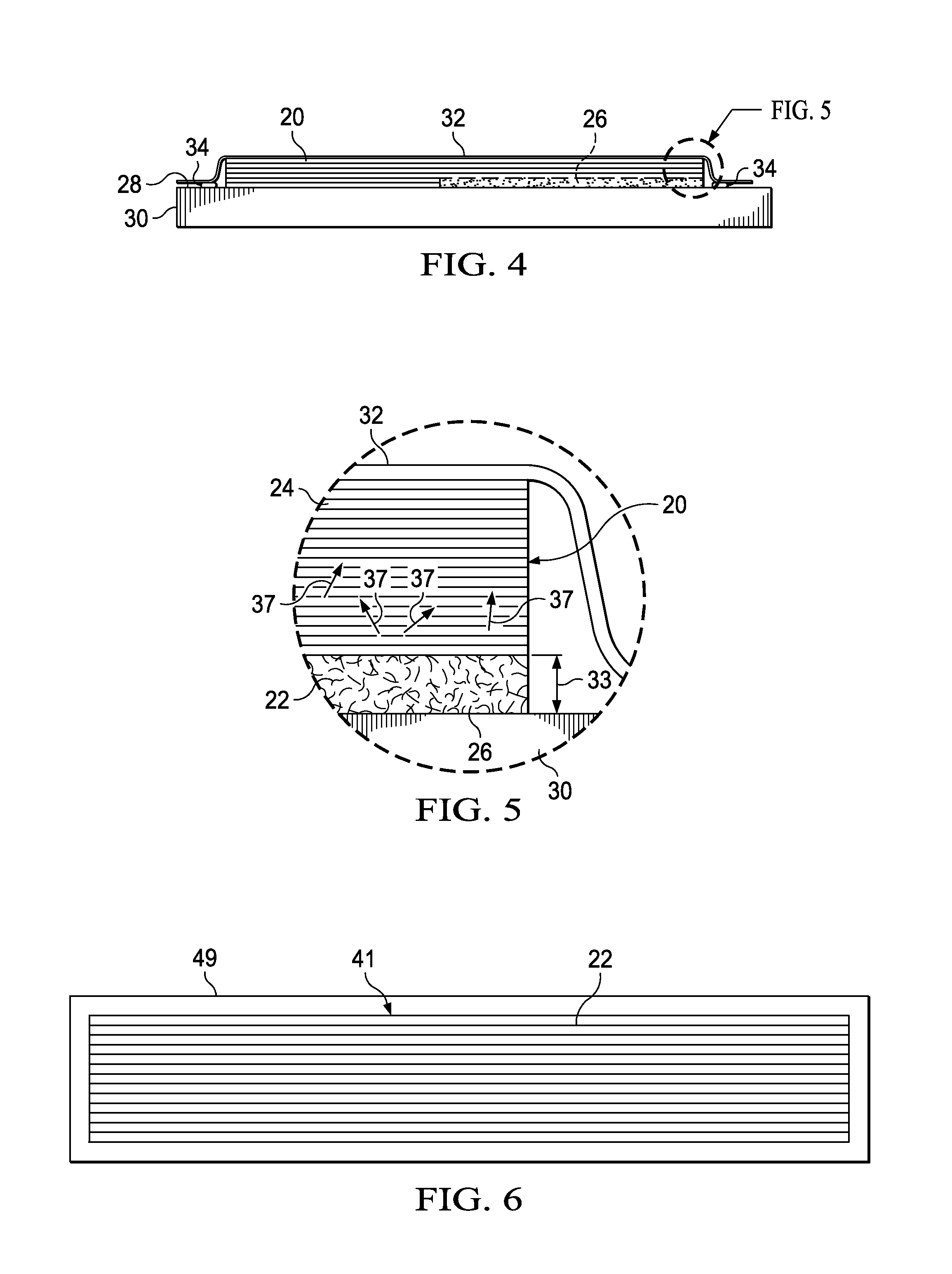Exposing Fibers in Composite Laminates
a technology of fiber reinforced resin and composite laminates, which is applied in the direction of synthetic resin layered products, packaging, fastening means, etc., can solve the problems of insufficient preparation of surface preparation of bonding parts, small margin of error when bonding parts, and crack propagation along bonding lines. , to achieve the effect of reducing or completely eliminating the need for mechanical fasteners, sufficient robustness and reliabl
- Summary
- Abstract
- Description
- Claims
- Application Information
AI Technical Summary
Benefits of technology
Problems solved by technology
Method used
Image
Examples
Embodiment Construction
[0042]Referring first to FIG. 1, in one aspect, the disclosed embodiments relate to a method of exposing fibers 22 in a section 25 of a fiber reinforced resin laminate 20, which may be, for example, a pre-preg. As shown in the enlargement 27, an uncured laminate 20 may comprise a layup of pre-preg plies of a suitable resin matrix 24 reinforced with unidirectional or bidirectional reinforcing fibers 22. The fibers 22 may comprise any material suitable for the application, such as, without limitation, carbon, and the resin 24 may comprise a compatible polymer, such as, without limitation epoxy. Other fibers22 and resins 24 are possible, including fiber reinforced thermoplastic resins. As will be discussed below in more detail, the section 25 of the laminate 20 where the fibers 22 are to be exposed may be a faying surface 35 that is intended to be joined to the faying surface 35 of another laminate in a secondary bonding operation.
[0043]In order to expose the reinforcing fibers 22 in a...
PUM
| Property | Measurement | Unit |
|---|---|---|
| viscosity | aaaaa | aaaaa |
| temperature | aaaaa | aaaaa |
| solvent | aaaaa | aaaaa |
Abstract
Description
Claims
Application Information
 Login to View More
Login to View More - R&D
- Intellectual Property
- Life Sciences
- Materials
- Tech Scout
- Unparalleled Data Quality
- Higher Quality Content
- 60% Fewer Hallucinations
Browse by: Latest US Patents, China's latest patents, Technical Efficacy Thesaurus, Application Domain, Technology Topic, Popular Technical Reports.
© 2025 PatSnap. All rights reserved.Legal|Privacy policy|Modern Slavery Act Transparency Statement|Sitemap|About US| Contact US: help@patsnap.com



